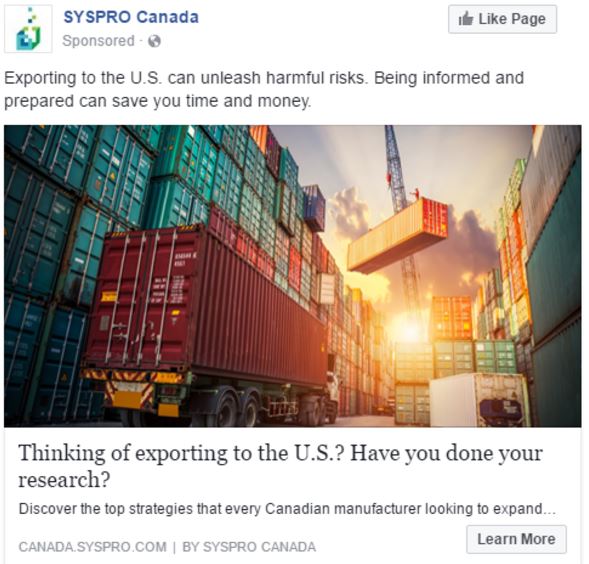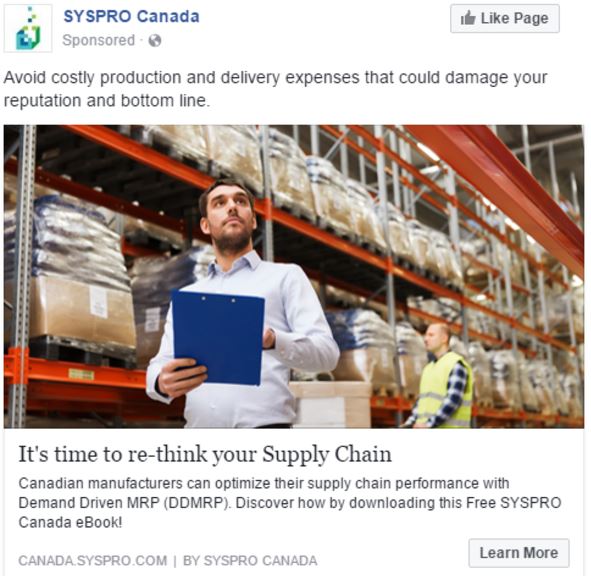This Facebook PPC guide for beginners will show you how to set up your Facebook ads using the 3x3x3 strategy — the best way to test your Facebook audiences, images and copy.
Long gone are the days of organic social growth. If you’re wondering why your Facebook marketing efforts haven’t been getting much traction, it’s is likely because you haven’t been paying to play — thanks to Facebook’s proprietary algorithm (formerly known as EdgeRank).
If your company is investing any time and money on Facebook (and we do believe this is a valuable medium for MSPs) then you need to know how to make sure it’s time well spent. But how do you use Facebook PPC effectively?
This Facebook PPC guide for beginners will show you how to set up your Facebook ads using the 3x3x3 strategy — the best way to test your Facebook audiences, images, and copy.
Statistics from the first quarter of 2017 show Facebook had 1.94 billion monthly active users — an enormous reach that makes Facebook advertising extremely fertile ground for MSP marketers.
But getting started with a Facebook PPC strategy can be a little overwhelming — and when you have limited time and resources, you need to know you’re spending them well. This step-by-step Facebook PPC guide will get you started in the right direction for Facebook PPC salvation.
Facebook PPC Guide: 3x3x3 Strategy
The 3x3x3 strategy is the easiest and most logical way to setup your Facebook PPC campaign. It requires you to test three different audiences, three different images, and three different versions of copy in conjunction with each other to create a total of 27 different Facebook ads.
1. Identify Your Success Metric
Other PPC platforms, such as Adwords, essentially only offer you the option to drive traffic to your landing page as the primary goal. Facebook is different in the sense it provides advertisers a variety of objectives from which to choose.
When you setup your Facebook PPC ad, there are a few examples of different marketing objectives you will be able to choose depending on your goal. You can:
-Drive brand awareness
-Generate traffic
-Increase number of video views
-Generate lead
-Increase conversions
Once you select your marketing objective, you can name your campaign and complete the setup of your Facebook ad account.
2. Pick Three Audiences
The next step in the Facebook PPC 3x3x3 strategy is to identify three audiences.
The audience and targeting features are where Facebook advertising really stands out from other PPC platforms. Facebook allows you to hyper focus your audience, targeting and selecting an audience based on:
-Location
-Demographics (age, gender, titles, etc.)
-Interests
-Behaviors
To maximize your spend, you want to be meticulous in the selection of these audiences. The more specific you can be, the better. Make sure you know your buyer personas and use them to develop three audiences so you can test which audience responds most enthusiastically to your ad. You’ll want to be as specific as possible about their age, their gender, and their interests. Read more on Why MSPs Should be Developing Buyer Personas here.
When we create audiences for our MSP clients based on the buyer personas they’ve created, we like to use a combination of different Facebook PPC features to craft three very specific target audiences.
As an example, we might target the CIO (or C-Suite) of a company, who’s between 40- and -55-years old, interested in cloud services or AWS, and located in New York. The granular segmenting capabilities are really what makes Facebook powerful.
You can then segment further by targeting an audience based on their connections.
Connection types allow you to segment your audience to include or exclude people who:
-Like your Facebook page
-Have friends that like your Facebook page
-Have responded to your event
-Have friends that responded to your event
Take some time to explore all the options available to you when creating your audiences. There are several ways you can target your Facebook audiences, and the more time you spend building those audiences and fleshing them out, the better your results will be (aka the more bang you will get for your advertising buck!).
3. Select Three Images
Once you’ve identified your three audiences, you’re ready to select images.
Facebook is an extremely visual medium, and how well you choose your images greatly affects your campaign’s success. Facebook suggests using images that are:
-Bright and eye-catching
-Easy to recognize and view at a small size
-Relevant to your product or service
-Simple — avoid images that have too many details and a lot of text (Note: If your image has more than 20%+ text on it, FB will purposefully impede the reach of your post. Ensure your images meet the requirements for text on an image by using the Facebook Text Tool. It can significantly help to improve your reach!)
By selecting three different images to pair with each of your audiences, you will be able to test which ad image performs the best and get the most out of your Facebook PPC spend.
4. Create Three Variations of Copy
Now you’re ready to craft three variations of copy. In this step, you want to test different marketing messages to see which resonates best in your ad copy.
By this point in our Facebook PPC guide, you should have 27 different ads ready to go. Nine ads for each of three audiences. And three within those nine will contain the same image, but different copy; three will include different images but still the same three copy versions; and three that have the third image you selected that use the each of the three versions of copy you created.
Below is an example of part of a 3x3x3 Facebook ad campaign we put together for one of our clients, SYSPRO.
These three versions of copy and images would be tested in conjunction with each other and target three different audiences.
5. Test and Take the Top
The whole point of the 3x3x3 strategy is to isolate the variable that performs the best. Based on conversions and clicks, you will be able to see which variation of text, image, and targeting works best. Take your top variations and run with those. It’s important to test all 27 Facebook PPC ads and isolate the winning variables. Then increase your spend on the winners!
The Value of a Third-Party Marketing Partner
Our Facebook PPC guide is the last post in our PPC series. Check out How to Set up a Killer PPC Campaign and The Best PPC Platforms for MSPs if you haven’t been following the series.
The key takeaway to remember is that PPC is all about testing, tweaking, and analyzing results. The best campaigns use an iterative process perfected by constant tweaking. That’s the reason we recommend working with a third-party partner to get the best bang for your buck — especially if you have a small marketing team that’s already spread thin.
At Total Product Marketing, we are experts in cloud and channel partner marketing — we know the MSP industry, and we can bring our strong marketing expertise to your niche market. Whether you are looking for a third-party PPC partner or want to optimize your entire lead funnel, contact us today to learn how we can help supercharge your marketing results.
Source: A How-To Facebook PPC Guide for MSPs | Cloud Computing content from Talkin’ Cloud






Recent Comments